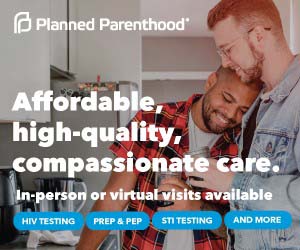A study released last week from an LGBT thinktank found that the percentage of Pennsylvanians who self-identify as LGBT is below the national average.
The Williams Institute at UCLA found last week that about 3.5 percent of all U.S. adults nationwide consider themselves LGBT, and about 2.7 percent of Pennsylvania residents identify as community members.
The report is based on six months of Gallup surveys from 2012 and is the largest-ever study of LGBT population size in the country. It was initiated after Gallup added the question, “Do you personally identify as lesbian, gay, bisexual or transgender?” in its daily tracking interviews.
Washington, D.C., reported the highest percentage of LGBTs — 10 percent —, followed by Hawaii at 5.1 percent. North Dakota was ranked last at 1.7 percent.
Pennsylvania was among 16 states that reported less than 3 percent of self-identified LGBT residents and is ranked among the bottom 10.
The local figure was based on interviews with 9,716 residents; only Texas, California, Florida and New York had higher numbers of sample sizes.
While there was not considerable variation among the states, the findings did suggest that self-identified LGBTs tend to live in more progressive areas. Of the 10 states and D.C. that reported at least 4 percent of respondents who identify as LGBT, seven of the jurisdictions have been ranked by Gallup as the most liberal in the country — while six of the bottom 10, not including Pennsylvania, were labeled as the most conservative. Additionally, all of the over-4 percent states, except for South Dakota, offer LGBT-inclusive nondiscrimination protections and some form of relationship recognition for same-sex couples.
“The variation, while not as big as some might expect, is clearly not random,” research Gary Gates told PGN. “The places that have more accepting social climates and legal climates for LGBT people have a higher percentage of self-identified LGBT people living there. In Pennsylvania, the social and legal issues for LGBTs are still pretty challenging.”
In the region, 3.7 percent of respondents self-identified as LGBT in New Jersey; Delaware, 3.4 percent; Maryland, 3.3 percent; and New York, 3.8 percent.
“The only thing separating Pennsylvania, New Jersey and New York is borders but yet we saw some different numbers there,” Gates said. “So I think that’s in part because of the broader social climates where there may be some additional social or legal stigma in Pennsylvania that’s not in the other states.”
But, Gates cautioned, the figure doesn’t necessarily mean that LGBTs aren’t living in Pennsylvania — but rather that they may not be as willing to self-identify.
“It’s not that all gay Pennsylvanians have moved to New England or the West Coast and that’s making the differences in percentages,” he said. “When people interpret the findings, they need to remember that what we’re measuring here is willingness to identify as LGBT. We’re not capturing sexual behaviors or attractions; it’s very explicitly a measure of people who self-identify as LGBT.”
